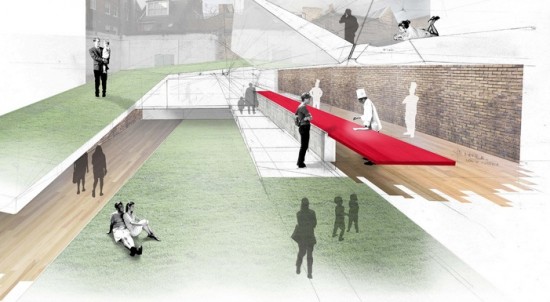Here is a little vignette describing how 3D collaborative environments can impact large organizations.
Just as technology has advanced in almost every field, so has the technology surrounding learning and collaboration. Three-dimensional virtual immersive environments are the next logical evolution and extension of existing technologies—a convergence of 2D virtual classrooms, social media, Web 2.0 and three-dimensional graphics. While they may have waned in the past few months, it would be a dangerous assumption to think they are gone. The possibilities are too rich.

The Story
The goal was to design an assembly line and custom equipment for the manufacturing of a new type of holding container. The team of design, safety and manufacturing engineers from Brazil, Germany, the United States and France decided to meet in a replica of the virtual 3D factory in which the product would be manufactured. After the avatars walked around the plant and looked at virtual representations of the equipment available within the plant, a suggestion was made to change one of the key pieces of equipment in the line from a single piece to two smaller pieces that could be placed in an L shape. It was thought by a few of the team members that the new shape would speed production.
However, not all of the team members agreed. After a few minutes of argument, one of the engineers went to whiteboard and diagrammed the design he felt would be the most effective. Another engineer picked up a different color marker for the white board and she slightly modified the original design, eliminating two feet from the one side of the new assembly.
The team agreed that the new assembly might work so they decided to prototype it and conduct some cursory human factors tests to see the strain the new design would put on an operator. While a few engineers built a virtual 3D prototype, one member of the team suggested they contact Jake, the human factors specialist with the company who was currently on assignment in a plant in China, to see if he had any input.
One of the team members quickly typed in Jake’s name and found that he was online. They asked him if he had a moment to help and within 30 seconds Jake’s avatar appeared in the factory to look at the new design of the equipment. He observed an avatar going through the production process at the newly designed piece of equipment and provided valuable suggestions for improvement.
The team then created the other pieces of equipment and ran the entire process working out problems and design flaws as they went.
The process took several months and a few times, the team had to go back to recorded sessions to double check assumptions and refresh their collective memories of why certain decisions were made. When the actual assembly line was manufactured and brought online, it ran smoothly with minimal start up problems or complications.
(This column is reprinted with permission from Kapp Notes.)
- New life for enterprise virtual worlds - March 19, 2012
- International collaboration — in 3D - January 17, 2012
- Design firm builds virtual tours, 3D learning games, university grid - March 17, 2011
